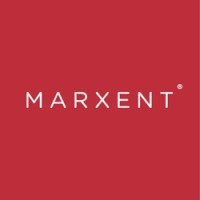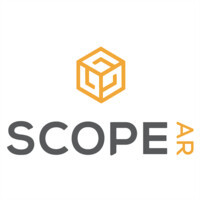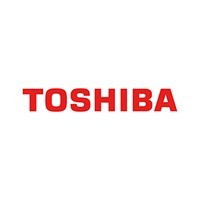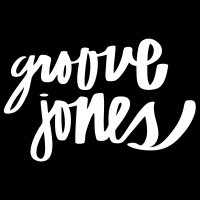Description

Marxent Labs

rooom
Comprehensive Overview: Marxent Labs vs rooom
Marxent Labs and rooom AG are two distinct companies that both operate in the realm of 3D visualization, augmented reality (AR), and virtual reality (VR) technologies. Here’s a comprehensive overview of their primary functions, target markets, market positioning, and key differentiating factors:
Marxent Labs
a) Primary Functions and Target Markets:
- Primary Functions: Marxent Labs is best known for its expertise in 3D commerce solutions, offering technology platforms used to create 3D product configurations and room designs for web and mobile applications. The company provides comprehensive 3D content management and 3D visualization software.
- Target Markets: Their primary target markets are retail sectors, particularly furniture, home improvement, building products, and kitchen cabinetry. They service large retailers who wish to provide customers with an immersive shopping experience.
b) Market Share and User Base:
- Market Share: Marxent’s proprietary platform, 3D Cloud, is quite prominent within the furniture and home improvement industry due to its early entry and continued innovation. The platform is used by several high-profile retailers such as Macy’s, Ashley Furniture, and Lowe’s.
- User Base: Its user base consists primarily of large retail chains and their customers who interact with 3D configurations online. The growing demand for enhanced online shopping experiences fuels their expanding user base.
c) Key Differentiating Factors:
- Specialization in 3D Commerce: Marxent's extensive experience with large retail clients and specialized solutions for the furniture industry make it a leader in 3D retail applications.
- Technological Integration: The platform integrates with various e-commerce systems and provides seamless AR and VR experiences, setting it apart through technological adaptability.
rooom AG
a) Primary Functions and Target Markets:
- Primary Functions: rooom AG provides a suite of solutions for creating, managing, and sharing interactive 3D, AR, and VR experiences. Their platform includes products for 3D product visualization, virtual events, and digital showrooms.
- Target Markets: The company targets a broad range of industries beyond just retail, including education, real estate, tourism, and manufacturing, offering tools for virtual exhibitions, interactive learning, and more.
b) Market Share and User Base:
- Market Share: rooom AG has carved out a niche in virtual events and digital showrooms, particularly highlighted by its applications in industries like education and tourism, which diversified during the COVID-19 pandemic.
- User Base: Their user base is diverse, including educational institutions, exhibition organizers, and businesses looking for unique ways to showcase their products and services.
c) Key Differentiating Factors:
- Versatility and Range: rooom AG’s broad application across multiple industries distinguishes it from competitors who might focus on more niche markets. This versatility allows rooom to cater to a wider audience.
- Comprehensive Platform: The company offers an all-in-one platform that supports both virtual events and 3D product visualization, designed to cater to the unique needs of a variety of industries, rather than focusing on singular solutions.
Conclusion
In summary, while both companies operate in the domain of 3D visualization technology, Marxent Labs is focused on enhancing retail experiences for the furniture and home improvement sectors with robust 3D commerce solutions. In contrast, rooom AG offers a versatile platform catering to a broad array of industries, distinguished by its focus on virtual events and digital showrooms.
Their market share and user bases reflect these differences, as Marxent caters mostly to large retailers, whereas rooom has a more diversified clientele spanning education, real estate, and more.
Contact Info

Year founded :
Not Available
Not Available
Not Available
Not Available
Not Available

Year founded :
Not Available
Not Available
Not Available
Not Available
Not Available
Feature Similarity Breakdown: Marxent Labs, rooom
Marxent Labs and rooom are both companies operating in the virtual and augmented reality space, offering solutions primarily for 3D visualization and product configurators. Here’s a breakdown of their feature similarities and differences:
a) Core Features in Common
-
3D Visualization:
- Both Marxent Labs and rooom offer robust 3D visualization capabilities, allowing users to interact with 3D models of products or spaces.
-
Augmented Reality (AR) Integration:
- Each company provides AR functionalities that enable users to place 3D models within a real-world context, which is particularly valuable for retail and real estate applications.
-
Virtual Reality (VR) Capabilities:
- They offer VR solutions for immersive experiences, useful in design reviews, or virtual tours.
-
Product Configuration:
- Both platforms allow users to customize products with different options, such as colors, materials, and features, directly within the 3D environment.
-
Cross-Platform Accessibility:
- Solutions are generally accessible across multiple devices, including desktops, tablets, and smartphones.
b) User Interface Comparison
-
Marxent Labs:
- Focuses on intuitive interfaces designed for ease of use in retail and sales applications. Their UI is often tailored towards quick customer adoption with a clean setup that prioritizes user-friendly navigation.
-
Rooom:
- Offers a comprehensive platform with a slick and modern design. It might involve more complex configurations, catering to diverse industries beyond retail, which could result in a slightly steeper learning curve for users unfamiliar with such platforms.
c) Unique Features
-
Marxent Labs:
- VisualCommerce™ Platform: A patented technology focusing on scalability for large product catalogs, making it particularly appealing to retailers with extensive inventories.
- Specialization in Furniture and Home Goods: Marxent has built a strong reputation in the furniture sector, offering specialized features pertinent to these industries.
-
Rooom:
- Versatile Use Cases: Roam supports a wider range of applications, including virtual events, exhibitions, and digital twins, broadening its appeal beyond traditional retail.
- Event and Community Features: Additionally, rooom provides specific capabilities for hosting virtual events and building online communities, which Marxent does not emphasize.
In summary, while both Marxent Labs and rooom share core competencies in 3D visualization and AR, the distinction lies mainly in their target industries and specialized features. Marxent is largely retail-focused with proprietary capabilities for massive product visualization, whereas rooom offers a broader array of applications, including event management and diverse AR/VR experiences.
Features

User-Friendly Interface
Integration and Compatibility
Virtual Reality Visualization
Customer Support

Project Management
Collaboration Tools
Customization Options
Best Fit Use Cases: Marxent Labs, rooom
Marxent Labs and rooom both offer innovative solutions in the domain of 3D visualization, augmented reality (AR), and virtual reality (VR) technologies, but they cater to different types of businesses and use cases. Here’s a detailed look at their best fit use cases:
Marxent Labs
a) Best Choice for Types of Businesses or Projects:
-
Retail and E-commerce:
- Furniture and Home Goods: Marxent Labs is particularly suited for furniture retailers and home goods stores that want to offer virtual product visualization. Their 3D Cloud™ platform allows customers to see how products would look in their homes using AR.
- DIY and Building Supply: Companies in this sector benefit from Marxent’s technologies by providing customers a way to visualize building materials, tools, and supplies in a home setting, enhancing the buying experience.
-
Manufacturing:
- Manufacturing businesses seeking to offer product configurators for complex items find Marxent’s solutions valuable for interactive, 3D product visualization and configuration.
-
Interior Design:
- Interior designers and firms can use Marxent’s solutions to create detailed 3D models and VR experiences that help clients visualize home renovations or design projects before implementation.
d) Industry Verticals or Company Sizes:
- Large Retail Chains: Given its focus on scalable solutions, Marxent caters well to large retailers with expansive product lines requiring robust 3D asset management.
- Enterprise-Level Clients: Due to the sophisticated nature of its platform, larger businesses with the budget to invest in high-end AR/VR solutions are ideal users of Marxent’s offerings.
rooom
b) Preferred Option Scenarios:
-
Event and Exhibition Industry:
- Virtual Events and Exhibitions: rooom excels at creating immersive virtual events, exhibitions, and trade shows. Companies needing a comprehensive digital space for showcasing products or hosting virtual conferences can leverage rooom’s capabilities.
-
Real Estate:
- Property Visualization: Real estate firms looking for detailed 3D tours and AR visualizations of properties can use rooom’s tools to deliver virtual open houses and interactive property walkthroughs.
-
Education and Training:
- Virtual Learning Environments: Educational institutions can utilize rooom’s platform to create virtual classrooms or laboratories, providing immersive learning experiences.
d) Industry Verticals or Company Sizes:
- Small to Medium Enterprises (SMEs): rooom’s platform is accessible to smaller companies aiming to create virtual spaces without extensive infrastructure investment.
- Event-Oriented Businesses: Companies of any size focused on events and live experiences find rooom’s collaborative and interactive features appealing and scalable.
Summary:
Overall, Marxent Labs is best suited for large retailers, manufacturers, and enterprises that need detailed and scalable 3D visualization and configuration tools, particularly in the home goods and building sectors. In contrast, rooom is ideal for SMEs and businesses focused on creating virtual events, exhibitions, and interactive experiences, with strong applicability in real estate, education, and event management. These products cater to different needs and sectors, with Marxent focusing on product visualization and configuration, while rooom emphasizes interactive virtual spaces and events.
Pricing

Pricing Not Available

Pricing Not Available
Metrics History
Metrics History
Comparing undefined across companies
Conclusion & Final Verdict: Marxent Labs vs rooom
To provide a conclusion and final verdict for the comparison between Marxent Labs and rooom, let’s first outline and then evaluate each of these aspects:
a) Best Overall Value
Considering all factors, rooom generally offers the best overall value. While both Marxent Labs and rooom deliver robust solutions, rooom stands out for its cost-effectiveness, broader range of features, and scalability, especially for small to mid-sized businesses and users seeking a comprehensive suite of 3D and VR solutions. Their platform often integrates seamlessly with existing workflows and offers interactive, immersive experiences that are well-suited for various industries.
b) Pros and Cons of Each Product
Marxent Labs:
-
Pros:
- Specializes in enterprise-level, customizable 3D visualization and augmented reality solutions.
- Offers robust tools specifically for retail, providing detailed analytics, configurators, and a strong backend system.
- Recognized for its excellent support and continuous innovation in retail-tech.
-
Cons:
- Higher price point, which may not be as feasible for smaller businesses or individual users.
- Primarily targeted towards bigger retailers, limiting its versatility for industries outside of retail.
- Customization processes can be more complex and time-consuming than competitors.
Rooom:
-
Pros:
- Provides a comprehensive suite of 3D, AR, and VR solutions across various industries beyond retail, including events, education, and real estate.
- More competitive pricing structure that is accessible for small to medium businesses.
- Simple setup and user-friendly interface that allows easy deployment and rapid scaling.
- Strong integration capabilities and flexibility, appealing to a diverse set of use cases.
-
Cons:
- May lack some of the deep industry-specific customizations that Marxent Labs offers for retail.
- Newer technology stack may encounter occasional bugs or require frequent updates to meet enterprise expectations.
- Some advanced features may require additional training and investment.
c) Specific Recommendations
For users deciding between Marxent Labs and rooom, consider the following:
-
Enterprise Retailers: If you are a large retailer looking for advanced, specialized solutions and have the budget to invest, Marxent Labs is the ideal choice due to its focus on retail technology and analytics.
-
Small to Medium Businesses and Diverse Industries: rooom is a more versatile platform, providing a balanced mix of features at an accessible price. It’s especially suited for entities needing a flexible, scalable solution across multiple industries.
-
Customization vs. Cost Efficiency: Consider the level of customization you require. If deeply tailored solutions are key, and the budget allows, Marxent Labs might be worth the investment. For cost-efficiency and ease of use, especially for those new to 3D/VR technologies, rooom is preferable.
In conclusion, while both platforms offer excellent 3D and AR solutions, your decision should be guided by your specific industry needs, budget, and the scale of deployment. Evaluate your priorities and technical requirements to choose the right platform tailored to your business expectations.
Add to compare
Add similar companies



